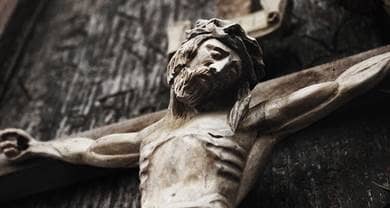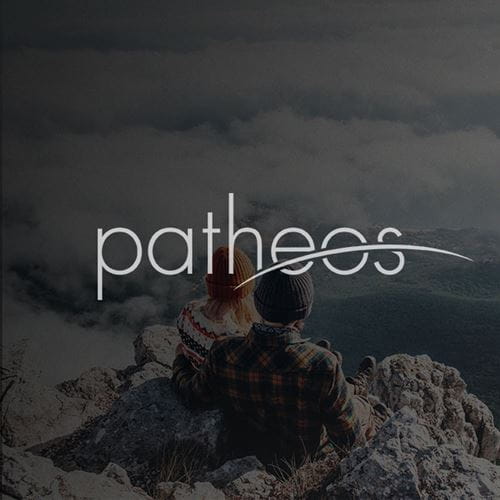- Trending:
- Pope Leo Xiv
- |
- Israel
- |
- Trump
- |
- Social Justice
- |
- Peace
- |
- Love

RELIGION LIBRARY
Roman Catholicism
Missions and Expansion
The pattern of trying to adapt Christianity to local customs while maintaining the integrity of the faith's beliefs and rituals began with Paul's address to the Athenians when he pointed to a statue labeled "the unknown God" and informed the Greeks that they were already worshipping the God he now named as Jesus (Acts 17:22-23). As Christianity spread throughout the Roman Empire, it often used Greek ideas and language to describe Jesus, but that approach was forced to change.
The faith turned north to Europe after the 7th and 8th centuries when Islam, in just a century after Mohammad's death in 632, swept rapidly across the Roman Empire's former eastern, southern, and western provinces. With Islam now in control of the Middle East, north Africa, and the Iberian peninsula, Rome looked north for a protector and for new evangelization opportunities. Monks from Ireland, Britain, and Germany played a key role and implemented a strategy of discovering where people's faith already was operating, even if it was still a mix of Roman paganism and Arianism, which was often the case in central and northern Europe. One example is St. Patrick, a 5th-century Briton who was successful in converting the Irish precisely because he had lived among them as a captive for six years.
Missionaries tended to Christianize pagan sites rather than destroy them. People already inclined to believe in the healing power of water at a particular site, for instance, would now find a baptistery at a well or bend in the river. Pagan temples were sprinkled with holy water and converted to altars. A local magus would be replaced by a Christian saint known for healing; pagan objects were supplanted by Christian relics, such as the wood of the cross or a strand of a saint's hair.
In this way, Catholicism spread quickly and fairly successfully across Visigothic Spain, Merovingian and Carolingian Gaul, and Anglo-Saxon England before turning east to Poland, Hungary, and Russia in the closing decades of the first millennium. Moreover, there was a measure of liturgical variation in the Middle Ages that was eventually regulated in 1570, with the Roman Missal issued shortly after the Council of Trent. A precise order for Mass was laid down, but variations were permitted as long as they were at least 200 years old, which was the case with the Ambrosian rite in Milan and Spain's Mozarabic rite, both dating to the middle of the first millennium.
Much of the Church's evangelization and enculturation efforts in the first 1500 years of Catholicism were increasingly driven by an emerging, then strengthening papacy that was concentrating power and authority in Rome, culminating in the creation of a papal monarchy in the Middle Ages. In the Church's first few centuries, the bishop of Rome enjoyed no special jurisdictional status among his many brother bishops across the Mediterranean world, although there was a certain recognition of his unique place as Peter's successor.
When the Roman Empire fell and there was no imperial or senatorial presence in the city and region, the bishop of Rome was forced by circumstance to take on a civil or secular role to maintain safety and the orderly running of the city of Rome and the nearby central portion of the Italian peninsula. So it was Pope Leo I who in 452 and 455 rode out to bribe the Huns and Vandals into skirting Rome. About 150 years later, Pope Gregory I complained that he spent too much time as a paymaster administering property and overseeing the local army, illustrating the extent to which the papacy administered in a secular sense.
Because of Islam's spread, popes seeking protection turned north, most notably to Charlemagne, who was only too happy to take on Constantine's mantle as defender of the faith and Church. Pope Leo III crowned him the Holy Roman Emperor in 800, thus beginning centuries of an uneasy alliance between royal powers who saw themselves in a theocratic role as sacred kings, which was the model in the Byzantine Empire, and popes who had sometimes to be civil rulers but who always claimed that spiritual power trumped temporal power.
In order to compete and as part of the effort to evangelize and centralize Catholicism, popes starting in the middle of the 11th century broke away from the cozy relationship with royal power and set up a rival monarchy complete with a law system (canon law) and court process, bureaucratic department (chancery, tax office, archive), ambassadors (legates), and inner circle of curial advisers (college of cardinals). Much of this effort stemmed from the ideas and actions of Pope Gregory VII (1073-1085), leading the era to be labeled the Gregorian Revolution, and was fueled by the desire to establish the Church's independence and ability to name her own bishops and abbots. The goal was to prevent secular powers from investing religious leaders with the symbols of their authority (miter, crozier, ring). This investiture controversy, as it is known, was settled in compromise by the Concordat of Worms in 1122, whereby civil rulers could give bishops and abbots symbols of their secular authority (a bowl of earth symbolizing property, perhaps a sword or scepter), but not religious symbols.
Study Questions:
1. What tactics did Christianity employ to aid its spread throughout the Roman Empire?
2. How did Christianity combat the rapid spread of Islam?
3. Why were Pagan sites converted, instead of destroyed?
4. Why were popes and emperors in tension to one another (from the 5th to the 11th centuries)? When did the mix between secularism and religion experience a notable break?










